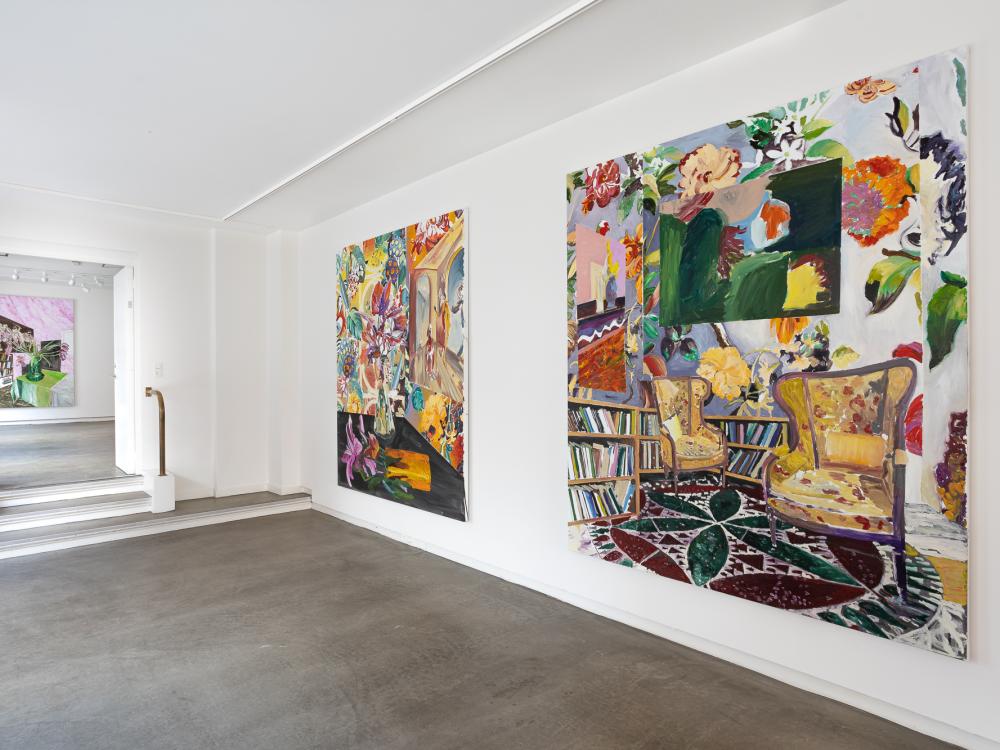Friday April 28, Erik A. Frandsen's new exhibition Bar Roma opens with Hans Alf Gallery. The exhibition is the result of an educational journey through Italy, during which Frandsen, accompanied by art historian and writer Tom Hermansen, has explored the fascist architecture of the Mussolini era, which still dominates the cityscapes of il Bel Paese today, almost 80 years after the death of Il Duce.
German sociologist Niklas Luhmann's divisive Systems Theory is rooted in the idea that no system - including a human being - will ever be able to escape its own blind spot: every observation is essentially limited by its starting point, its distinction, as Luhmann calls it. In other words, an observation contains everything but itself: As a human being, you cannot observe your own point of view - at least not without a change in your observation and thus your distinction. By definition, what you wanted to observe no longer is. It is not only a theoretical but also an existential paradox.
It can be difficult to pinpoint one specific component in an artist’s oeuvre that makes him or her exemplary. With some – take Picasso for example – it is impossible to boil down the brilliance into one isolated element, and with others – the vast majority – there is really no singular quality that could justifiably be elevated to a unique and defining characteristic.
Since the early 1980s, Frandsen's work has been characterized by a fundamental unease, a constant and insistent exploration of possibilities, different media, and forms of expression. And the artist’s permanent restlessness only seems to have intensified with age. Unlike many other artists who have achieved similar public and professional recognition, Frandsen rarely employs the same formula for very long - rather he often seems almost anxious to tear up the script and start anew. Or at least to dissect, expand and distort what was just created to such an extent that moments later it appears to be something completely different. For more than four decades, the willful painter has been propelled by a deeply personal iconoclasm, an inner thrust.
When Frandsen decides to study fascist, Italian architecture, it isn’t as much a matter of challenging a potentially suffocating political correctness that engulfs the art world these days, as it is a consequence of a stubborn resistance to prohibitions and pious exhortations at large. No one should put restraints on Frandsen's curiosity, and if he wants to be pommeled by the architectural sprays of Mussolini Fascism, it has nothing to do with the ethos or dogmas of its underlying ideology: his interest stems solely from an insatiable fascination with aesthetics and ideals of beauty; human creations in this world that in very different ways - and for very different reasons - aspire to and reach for the sublime.
In many ways, Frandsen's unique method is exemplified by the body of work that has resulted from this journey. Frandsen's paintings present themselves almost as physical manifestations of what psychologists call 'sensory overload'. In most works, the picture plane is built up from a multitude of seemingly unrelated impressions, nonsensical perspectives, widely ramified references and violent colour explosions. It is as if each work is at war with itself. As viewers, we are confronted with a veritable sea of disparate sub-elements - a bell tower in a nameless Italian town, a watermelon cut in half, an intricate pattern in opus sectile, a flowery armchair, a formidable marble floor, a sketch for another painting within the painting, the scraps of a stained glass window with a biblical motif, a gigantic bookcase, a painting of a firing squad, and then, of course, cut flowers of all shapes and sizes and in various stages of decay - everything painted with an almost uncanny understanding of colours, layer upon layer upon layer.
The fragments of Fascist architecture have in no way high-jacked Frandsen’s paintings, rather they are conscribed into his ongoing catalogue of motifs, rendering them still unmistakably his (as has always been the case with each new experiment) - now just with an additional dimension, an extra point of view that adds to the already existing works. It is a kind of accumulation of impressions and effects, an entirely additive process that can be traced back decades in Frandsen's work. Or put in another way: decades of work can be traced in each individual painting. The big selling point of blockchain technology and the much-discussed NFT art is that all transactions and master data are stored in the individual artworks, but in Frandsen's case, this would never be necessary: His paintings are themselves a kind of analogue NFTs; each work describes its own origin without omitting anything.
Frandsen does not simply triangulate; that would be too banal. He is the stubborn pictorial cartographer of Danish art, painstakingly and often unsystematically measuring the world with the brushes at hand - knowing that he will never escape his own observation, his unique point of view. But therein also lies the strength of Frandsen's work: it is exploratory, inexhaustible and, by definition, interrogative rather than definitive. An artistic antithesis to the sometimes quasi-militant political correctness of their time, Frandsen's works insist on not knowing the truth - perhaps even on not acknowledging the existence of such a thing, of anything definitive at all. We must wonder, we must doubt, we must open ourselves to the world and ask questions. Hence, Frandsen's artistic credo could be seen as a philosophy of life: We should never assume that we see the full picture.
---
Bar Roma opens on Friday April 28 and continues through May 27. Accompanying the exhibition, a catalogue will be available featuring an essay on Fascist architecture in Italy by Tom Hermansen alongside reproductions of each work in the exhibition.













